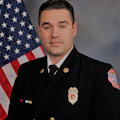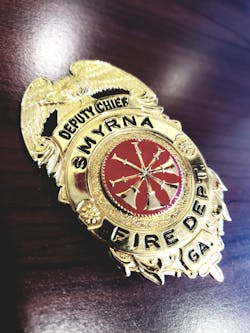Four Bugle Chief: How the Chief Behind the Chief Works Best
The Four Bugle Chief (FBC) is known by many in the fire service as the second in command. This professional reports to the chief (CEO) of the organization with a focus on operationalizing the given strategy. While the chief is concerned with a long-term vision for the organization, the second in command is tasked with implementing daily operations and aligning the organization to the strategy. His or her individual role can vary depending on the organization itself and the chief’s personal style. In many cases, the FBC is chosen specifically to complement the strengths and weaknesses of the chief, or to work in tandem to bring the best leadership to forward.
In my experience, I’ve found there are three recurring orientations that the FBC is faced with on a daily basis. All three orientations consider the role and suggest key priorities for the FBC. I believe understanding these three orientations helps create a useful framework for the role and ultimately lead to success for the organization.
Orientation #1—the chief
The first orientation focuses on the chief—the leader to whom the FBC reports. The chief is the head visionary for the organization. In this orientation, the goal of the FBC is to do things that allow the chief to operate at a higher level of performance.
What might the FBC do in this orientation? It’s often a mix of things, including serving as:
- A strategic adviser and confidant (a highly trusted person who can discuss the “big ideas” with the chief)
- An effective communicator (can move the strategy to action)
- An effective proxy for the chief (understanding the need to stay aligned on the issues at hand)
- An organizer (to help manage priorities, projects, decisions, and actions that should or shouldn’t be in the brain space of the chief)
Orientation #2—the leadership team
This second orientation goes beyond the chief to include the leadership team over which, in most cases, the FBC oversees. Comparable to the first orientation, the goal of the FBC in this case is to do things that encourage the leadership team to operate at a higher level of performance.
This orientation demands a broader, and possibly a more technical, set of skills than Orientation #1. Areas of focus that may fall under this orientation include:
- Ensuring the leadership teams stays focused on what’s most important.
- Setting the right cadence for the leadership team.
- Ensuring the team dynamic is healthy and cohesive. In order for this to happen, a safe and candid dialogue must be protected.
Five strategic tasks for the FBC
- Work relentlessly for alignment—How can we help this leadership team work better together? Just like a car needs an alignment, regardless if it is a Mercedes or a Honda Civic, you need to change the oil and rotate the tires.
- Quality interactions—What are the critical points between the senior leadership team and other divisions in the organization, and how can we help strengthen those connections? Every interaction counts! The troops might not have the opportunity to see you, but when they do, what are those interactions like?
- Plan, prepare and plan some more—How might we communicate and execute our strategy and planning efforts to get the best results?
- Measure—How are we monitoring our progress, and how do we hold ourselves accountable for achieving our desired results? What we measure, often gets improved. What mechanisms do we have in place to capture what’s important?
- Communicate in a variety of ways—What are we saying to the organization, at what cadence, and through what process?
Beyond these strategic tasks, the FBC might be asked to oversee certain initiatives or teams directly in this orientation. For example, there might be an emerging capability in the organization, but we’re not yet sure where to put it. Placing that team under the FBC provides a close pulse check and awareness to the chief (i.e., CIP, data software, Blue Card). Another example might be short-term, critical projects that span several members of the leadership team or parts of the organization (i.e., apparatus replacement, professional development program, promotions).
Orientation #3—The organization
The third and arguably the most impactful orientation for the FBC is creating traction for the organization. The FBC is first considering all the pieces, and conveying a clear and direct strategy direction is critical. The FBC should ask, “Given what we know and aim to do, how might we best set up our organization to accomplish these objectives?”
Specific topics and focus areas in this orientation include:
- Organizational strategy—Working with the chief to design the most effective organizational structure. Do we have the right people in the right seats? Or should they even be on the bus?
- Key organizational capabilities—Prioritizing what the organization needs to be great at, then positioning those individuals and assets to be most effective. Ask where you are most vulnerable and work to close those gaps.
- Compliance—Defining the critical recurring processes, inspection mechanisms and decision rules to ensure strong execution.
- Attack the gaps—Generally looking for and addressing gaps and inefficiencies across the organization.
In this capacity, the FBC is the architect, champion and curator of the organization’s day-to-day operations.
Working with the orientations
All three of the above orientations can provide value; none are inherently better or more important than the other. As any FBC will tell you, the role is always tailored to the organization’s leadership landscape and, of course, the chief. It’s for these reasons that it’s important for the chief and the FBC to engage in a candid conversation on how they see the role. Being intentional about how the role is set up delivers a shared set of expectations that form the basis of a good and productive relationship.
Skills to look for in an FBC
Chiefs looking to fill the role of a FBC will likely consider these foundational attributes, regardless of orientation:
- A passion for process—Because the FBC is often brought in to help bring order to things, the individual needs to be a methodical, process- oriented individual.
- Strategic thinker—The FBC needs to be able to see the big picture of things. A strategic mindset helps align detailed work to the big picture strategy, as well as evaluate what is urgent versus important.
- Credible—The FBC should have a reputation for doing what they say they will do and being a solid team player.
- Adaptable—Finally, a daily part of being a FBC requires managing conversations, synthesizing multiple points of view, and aligning the leadership on direction, all in a professional way. In that regard, the individual needs both the temperament and means to communicate on a wide variety of topics at various levels of the organization.
For many, serving in or aspiring to this role can and should be intentional about developing these skills early in their professional career.
As a last point, remember, “You don’t have to lead yourself by yourself.” —Andy Stanley
About the Author

Brian Marcos
Brian Marcos is the deputy fire chief with Smyrna, GA, Fire Department, where he has served for 13 years. He has been a lead instructor with the Metro Atlanta Fire Firefighters Conference since 2014, and holds certifications as a Fire Instructor II and Fire Department Executive. He is also certified in Blue Card Command, and as a Georgia Smoke Diver and a paramedic. He is a member of the Metro Atlanta Fire Chiefs Association and the Georgia Association of Fire Chiefs. Marcos holds a bachelor’s degree in fire administration and is a graduate of the Cobb Leadership program.
